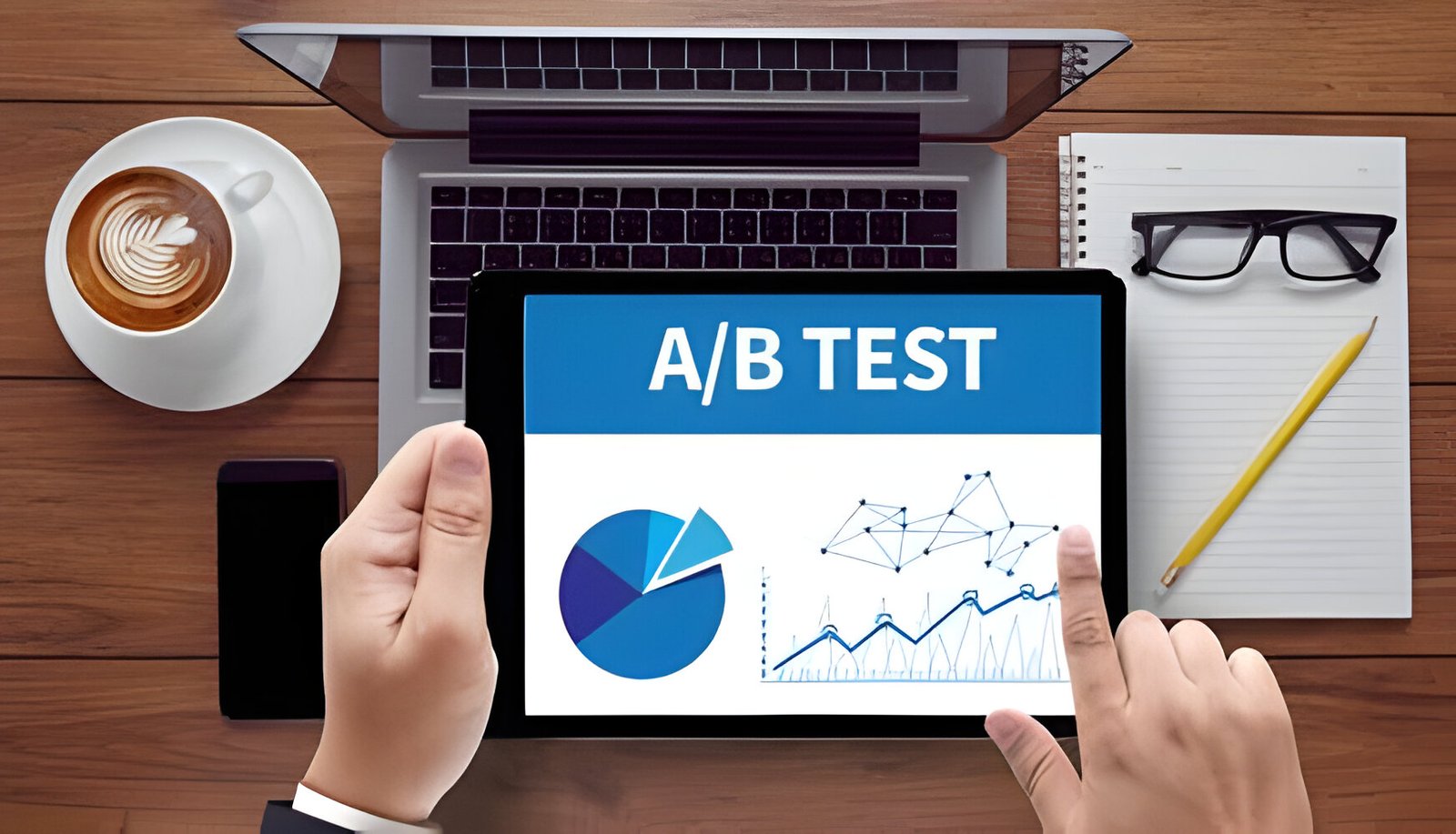WHAT IS A/B TESTING IN MARKETING
A/ B testing definition: A/ B testing is also called split testing or bucket testing, compares the performance of two versions of content to see which one appeals
Additionally to visitors’ viewers. It compares two versions—the control (A) and the variation (B)—in order to determine which is the most effective based on your key performance indicators.
If you work in digital marketing and undertake either B2B or B2C marketing, you have the following choices for doing A/B tests:
• Traffic is divided between the A and B versions of a website based on A/B testing (copy, pictures, different layout, calls to action). You track user behavior to determine which version generates the highest volume of either 1) conversions or 2) visitors that take the desired action.
- Email marketing A/ B testing (subject line, images, call to action) splits recipients into two segments to determine which version generates an advanced open rate.
- Content selected by editors or an algorithm based on user behavior to see which results in further engagement. Regardless of the focus, A/ B testing helps you determine how to provide a stylish customer experience (CX).
There are A/B/N tests in addition to A/B tests, where “N” stands for “unknown”. There are more than two variants in an A/B/N test. When to do an A/B test and why Continuous operation yields the greatest benefits from A/B testing.
A regular flow of tests can deliver recommendations on how to OK-tune performance. And nonstop testing is possible because the available options for testing are nearly unlimited.
As noted above, A/ B testing can be used to evaluate just about any digital marketing asset, including
- Emails
- Newsletters
- Advertisements
- Text messages
- Website pages
- Components on web pages
- Mobile apps
A/ B testing is essential in campaign management since it helps determine what’s and isn’t working. It provides insights into the interests and responses of your target audience. A/B testing may assist you in deciding which aspect of your marketing plan is most effective, which needs tweaking, and which should be abandoned entirely.
After discussing the benefits of A/B testing, let’s look at two factors to choose whether to test.
- You have a digital marketing campaign or element that’s not performing at optimal levels and thus is not meeting expectations. A/ B testing can isolate the performance problem and drive performance advancement.
- You’re about to launch something new (web page, email campaign) and are unsure which approach (similar to messaging) will perform stylishly. Visionary use of A/ B testing will allow you to compare and contrast the performance of two methods to identify the better one.
A/B testing has the following advantages for your website: One excellent method for objectively identifying the strategies that resonate with website visitors is through A/B testing.
- Your intuition can be confirmed to be incorrect, or it might be confirmed to be correct. There is still a benefit, though, in that you won’t persist with a bad idea.
- You’ll attract more visitors who spend more time on your site and click further links. You can make determinations that improve the test page and other analogous pages by testing extensively used website component sections.
How do you perform an A/ B testing?
A/ B testing is simple but requires marketers to follow a well-defined process.
Here are these nine introductory steps, the abecedarian steps to planning and executing an A/ B test
- 1. Assess and evaluate the performance baseline;
- Use the performance baseline to determine the testing objective;
- Formulate a theory on how the test will improve performance.
- Determine the test sites or targets.
- Produce the test versions A and B.
- Make use of a QA tool to confirm the configuration
- Carry out the examination
- Use testing and web analytics to monitor and assess outcomes
- Use what you’ve learned to improve the client experience
Following the steps below with apparent pretensions and a solid hypothesis will help you avoid common A/ B testing mistakes.
Tests will provide data and empirical substantiation to help you refine and enhance performance. Using what you’ve learned from A/ B testing will help make a more significant impact, design a more engaging customer experience( CX), write more compelling copy, and create further captivating visuals. As you continuously optimize, your marketing strategies will become more effective, increasing ROI and driving additional profit.
A/ B testing examples: a list of digital marketing elements that can be tested includes one or more of the items below
- Navigation links
- Calls to action (CTAs)
- Design/ layout
- Copy
- Content offer
- Headline
- Email subject line
- Friendly email “from” address
- Images
- Social media buttons (or other buttons)
- Logos and taglines slogans
Your business goals, performance objectives, baseline, and current marketing campaign mix will help you determine the stylish candidates to test.
Analytics function in A/B testing of websites
Analytics plays a crucial role in the design, implementation, and performance recommendations of each A/B test. Developing a test hypothesis necessitates a solid analytical basis. You must be aware of the traffic volume and performance as of right now. When it comes to web analytics, for instance, your analytics system will supply some vital information throughout the planning phase, such as
- Traffic to the page, component, or other element under examination for test scenarios (page views, unique visitors).
- Engagement (time spent, runners per visit, bounce rate)
- Conversions (clicks, enrolments, fallout)
- Performance trended over time without this grounding in analytics; any test script or performance assessment will likely be based on particular preferences or prints.
Analytics becomes even more important when an A/B test is initiated. A dashboard keeps track of performance data in real-time, confirms that the test is running as planned, and reacts to abnormalities or unexpected outcomes.
This may entail halting the test, making any modifications, resuming it, and ensuring that any changes are reflected in the performance.
The performance dashboard assists in deciding how long to run the test to guarantee statistical significance. Analytics are the foundation for determining the following line of action once the test is completed. They can be used, for instance, to determine if the test winner becomes the regular presentation on the tested webpage and whether it becomes a permanent norm. Marketers should develop an applicable analytics template to convey test results and adapt that template to reflect a specific test’s elements.

